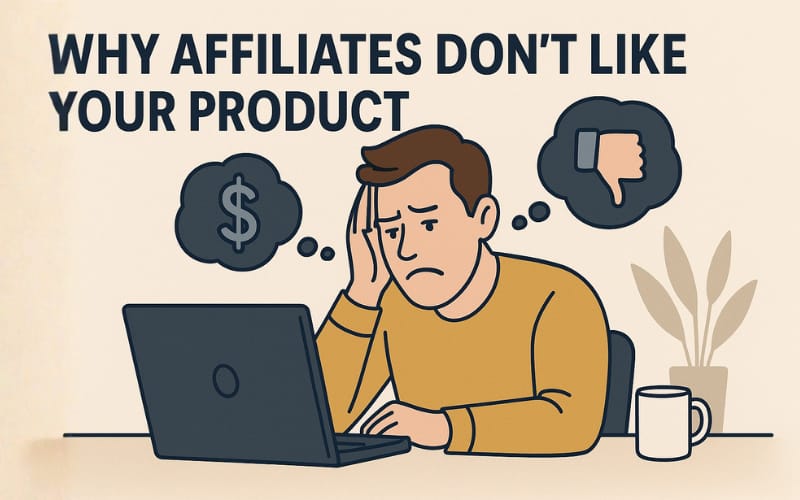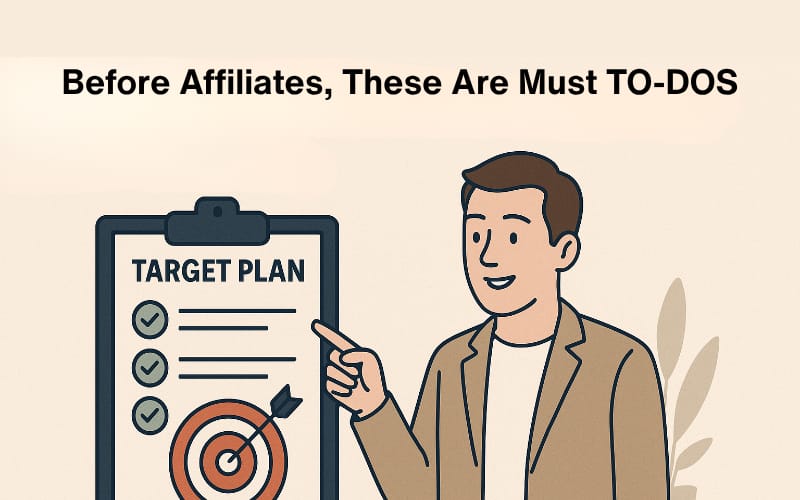- TikTok Shop Playbook
- Posts
- Why Affiliates Don’t Like Your Product (and What to Fix Before You Recruit Them)
Why Affiliates Don’t Like Your Product (and What to Fix Before You Recruit Them)
One of the biggest misconceptions about TikTok Shop affiliate marketing is that creators are the growth engine.
They are not the engine — they are the accelerator.
If your product is slow, unclear, or unproven, no amount of creators will fix that.
In fact, they’ll just expose the problem faster.
The Brutal Truth: Affiliates Don’t Want to Sell a Bad Offer
Creators are not your sales reps. They’re not sitting around hoping to push your SKU to make a few dollars.
They have endless offers to choose from — and the ones that sell easily, with better creative potential and faster conversion, win every time.
When an affiliate doesn’t pick your product, it’s not personal. It’s simply a conversion calculus. They’re looking for:
Products that convert fast (clear value prop + proven landing page)
Offers that make them look good on camera (easy to demonstrate or show results)
Commissions that make the effort worth it
Brands that look credible (good packaging, high-quality visuals, no shady vibes)
If your product or offer doesn’t meet those conditions, you’re asking creators to work uphill. And most won’t.

Before Affiliates — Fix Your Product and Offer First
Most sellers jump into affiliate mode too early. They want volume before validation.
But affiliate success comes after a few critical pieces are in place.
Here’s what to nail down before opening your affiliate recruitment floodgates:
1. Nail Your Hero SKU
Affiliates need one clear winner — not a lineup of maybes.
If you have five products and can’t tell me which one sells best, you’re not ready.
A “hero SKU” is your easiest-to-explain, highest-volume product.
It should check these boxes:
Strong visual appeal (can be shown in a 5-second TikTok)
Clear use case or transformation
Competitive price point (impulse-buy friendly)
Repeat purchase potential or strong word-of-mouth factor
When you have that one product that just makes sense, it becomes magnetic to creators.
2. Build a Strong Product Listing
A bad listing kills creator motivation instantly.
No creator wants to promote a product that looks untrustworthy or confusing on the TikTok Shop page.
Before you start outreach, fix your:
Product title: Short, keyword-rich, benefit-first
Main image: High-contrast, lifestyle-driven
Video assets: At least one native TikTok-style video (UGC or demo)
Bullet points: Clear, emotional, and focused on transformation, not specs
Shop visuals: Consistent branding and design
A strong listing doesn’t just help conversions — it signals to creators that you care about presentation and credibility.
3. Optimize Your Pricing and Commission Structure
Creators talk. If your commissions are too low, or your product is overpriced compared to alternatives, they’ll move on.
Here’s the simple benchmark:
15-25% commissions are standard for CPG, beauty, or wellness products.
>25% is fine for higher-ticket items if AOV is $80–$100+.
Stackable incentives (like “double commission during launch week”) create urgency for creators.
You can’t control what a creator posts. But you can make it financially attractive enough that they’ll test your product at least once.
4. Gather Proof of Conversion
Before you invite creators, prove your product sells organically.
That could mean:
Your own brand account has videos that reached 100K+ views and generated sales
Paid ads or Spark Ads have delivered a breakeven ROAS
You’ve converted through your own audience or mailing list
Once you have evidence that the product converts, creators feel safer betting their time and credibility on you.
Think of it like this: creators are investors. They’re investing their content time into your product. You need data as your pitch deck.
5. Clarify Your Hook and Messaging
Creators shouldn’t have to guess why your product sells.
If your brand’s value prop isn’t clear in one sentence, you’re making it hard for creators to create.
Ask yourself:
What is the transformation or “aha” moment for users?
What’s the emotional benefit (energy, confidence, calm, etc.)?
What’s the proof (social reviews, before/after, certifications)?
Package that into one clear script line or hook idea, like:
“This hydration powder helps women over 40 feel relaxed and calm” or “It’s like Gatorade, but with 20g of protein.”
When you hand creators a story, not just a SKU, you multiply your chances of success.

The Affiliate Mindset: They’re Your Mirror
Affiliates are brutally honest reflections of product-market fit.
If they don’t bite, it’s not because they don’t understand your brand — it’s because customers don’t either.
A creator’s decision is often the earliest indicator of how scalable your offer is.
If 20 creators test your product and 0 keep posting, it’s a signal that:
Your content angle isn’t resonating
The product feels generic
The offer (price or commission) isn’t motivating
Or simply, the customer doesn’t care enough
It’s feedback. Not failure.
What to Do Once You’re Ready
Once you’ve refined your product, listing, and proof of concept — that’s when affiliates start working for you, not against you.
Here’s a simple 3-step rollout:
Start with Target Plans
Instead of opening your shop to everyone, create a Target Plan with a small group of high-potential creators.
These are the affiliates you handpick — send samples to, share briefs with, and guide through content creation.
The goal is to generate 30–50 pieces of content in the first month, test multiple hooks, and prove conversion before scaling.Then Open Affiliate Recruitment
Upload that proven content into the affiliate portal.
Your shop now looks credible — and affiliates will copy what already converts.Incentivize With Tiers
Reward creators who post 5+ videos, hit $1K GMV, or stay consistent.
The more data they have, the easier it gets to scale.
The Takeaway
Affiliates don’t hate your product — they just don’t want to sell for you.
They want to sell with you.
But that only happens when you’ve done your homework:
✅ Clear product story
✅ Compelling listing
✅ Attractive offer
✅ Proven conversion
Creators amplify momentum — not build it.
So before you chase affiliates, build something worth chasing.
TL;DR: Before recruiting affiliates, make sure your product already sells, looks credible, and converts.
Affiliates don’t create momentum — they multiply it.